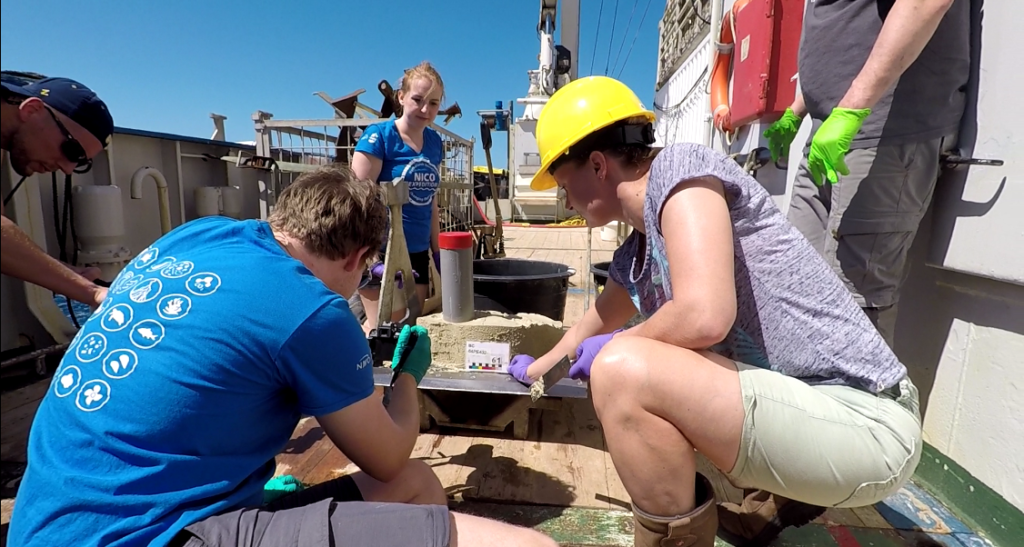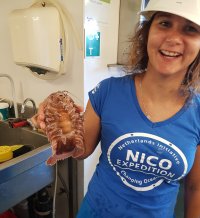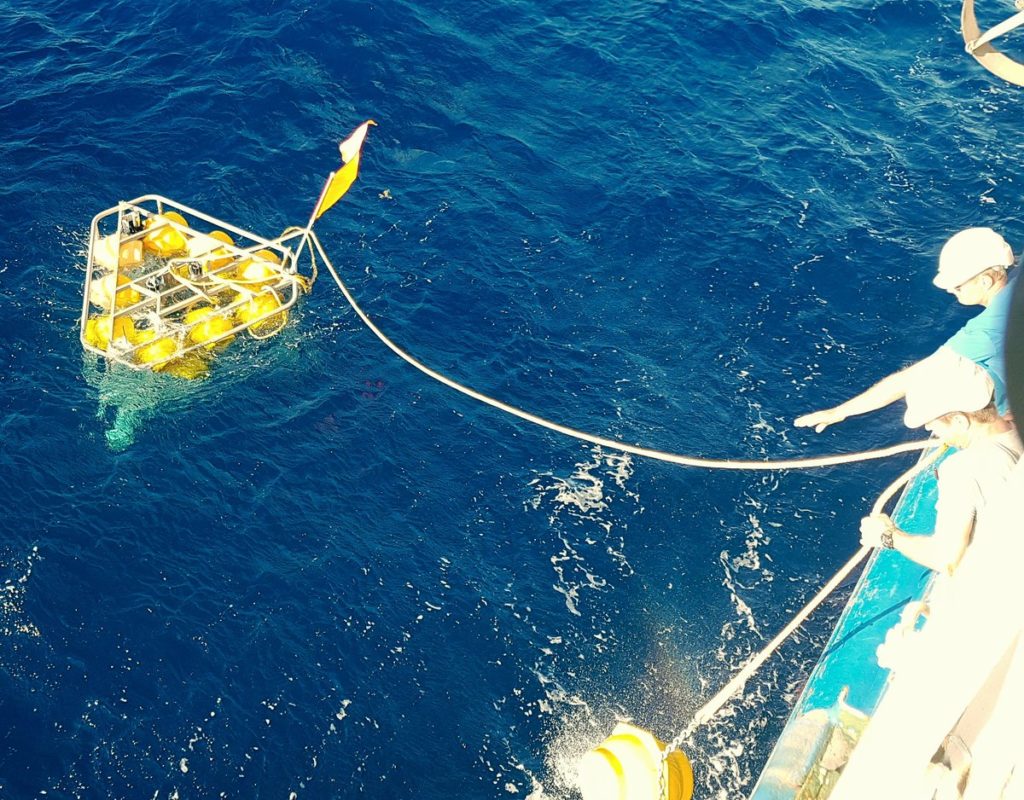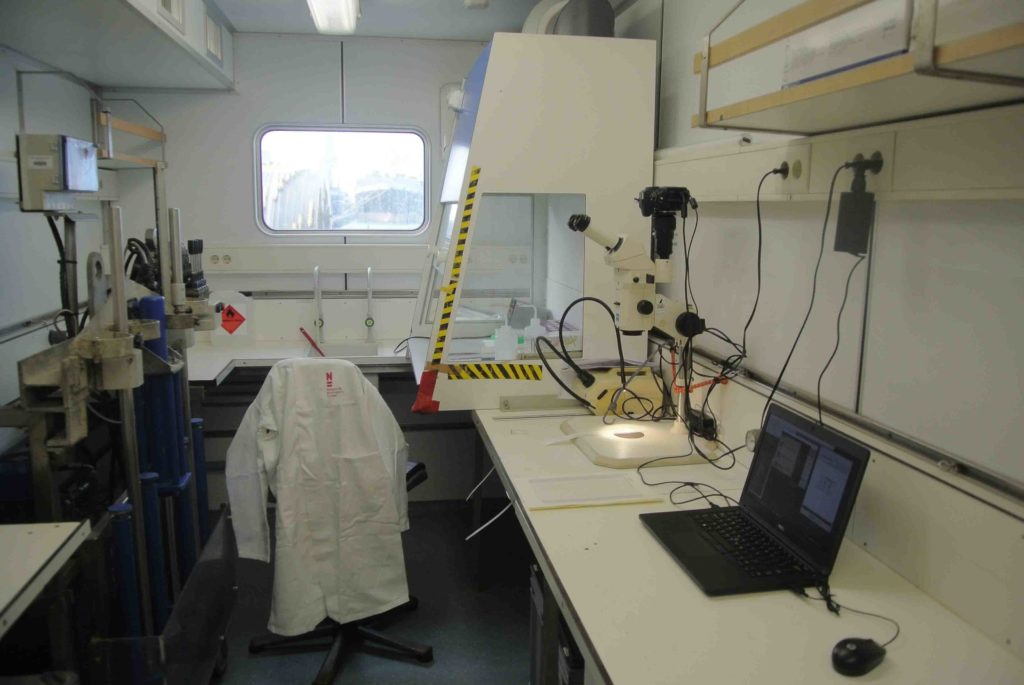Photo’s Tatiana Becker en Stephan van Duin
She has not yet really recovered from the jetlag and sudden change in temperature. Tatiana Becker, a Master’s student in Marine Resource Management, is just back from a two-week research expedition to the Saba Bank in the Caribbean. She was one of 20 lucky Dutch students who were allowed to take part in the NICO expedition (see inset).
Becker was born on Curacao and grew up on Aruba, where her family still live. She came to the Netherlands to do her degree and she was pleased to have this opportunity to return to her home region. ‘I was so happy when I heard in December that I would be allowed to join. There were around 150 applications for 20 places.’
Terra incognita
In mid-February, Becker boarded the research ship the Pelagaia in Philipsburg harbour in Sint Maarten. She felt quite nervous as she had never been so far out to sea for so long. ‘The sea was pretty rough all the time and I was seasick at first, but I eventually got used to it. Later on I found the rocking quite calming and I slept well. I’m pleased that I now know I can cope with it. There was one researcher on board who always gets seasick. I’d find that awful.’
Once the nausea had passed, Becker was able to enjoy the azure water, the fantastic surroundings and the pleasant temperatures. But this was no holiday cruise, despite the tropical setting. ‘It was really hard work, especially as I was the only student on board. Normally there are two at the same time.’ As a research student, she helped out with the deep sea studies. The Saba Bank is actually an underwater mountain hundreds of metres high that is primarily known for the coral reefs around its summit. But the deep waters around the foot of the mountain are largely terra incognita, explains Becker. It was precisely those depths – down as far as 1500 metres – that the researchers were trying to map. They did this for example by taking water samples with a seabed lander that had the appropriate name of Pumpy.

Tatiana assisted the scientists with their work.
Algae make clouds
In the two weeks that Becker was on the ship, the researchers took water samples at various depths, analysing some while they were still on board. ‘We were looking for example at different chemicals in the water that can influence climate change. Phytoplankton, such as algae, produce certain substances that are broken down by bacteria to make the gas dimethyl sulphide. This gas is involved in the formation of clouds and researchers suspect that it could help to combat climate change.’
Becker helped researchers from the Netherlands Institute for Sea Research (NIOZ) and Groningen University process the water samples. ‘That’s precision work because the samples have to be stored as soon as possible because the concentrations can change over time, for example due to temperature fluctuations. That was stressful early on in particular because I hadn’t yet mastered the process. There were a few occasions then when I had to work until deep in the night.’
In de diepte zwemmen beesten die zo uit een horrorfilm lijken te komen

Tatiana Becker shows a woodlouse that has been fished from the depths.
The researchers were also curious to know what was living in the depths. They fitted special underwater bait cameras to the frame of a seabed lander that they then sank to different depths. They filmed in the pitch dark using an infrared lamp. Becker: ‘It is amazing to see what is attracted by the bait ‑ the weirdest creatures that wouldn’t look out of place in a horror film. We saw entire families of giant woodlice. The largest was almost half a metre long!’
Traps were also attached to the frame that let the researchers capture creatures for further study. This ‘cabinet of curiosities’ was then presented to NIOZ taxonomist Marc Lavaleye. ‘He’s a real walking encyclopaedia. He is already retired and has been on more than 60 expeditions. I found it interesting getting to know different disciplines and I learnt a huge amount in that short period. Until then I knew nothing for example about microbiology and how that plays a role in climate change.’

Researchers used seabed landers to film and catch sea creatures.
Returning to Aruba
Becker is now back in the Netherlands but she is not yet finished with the expedition. ‘Lots of video images still need to be analysed to identify the different species. I’d like to help with that.’ She has already booked her next plane ticket. ‘I’ll be going back that way in May for my Master’s thesis. I still have to decide what I’ll be doing exactly. I think the climate is an important subject and I’m also particularly interested in applied research that leads to clear recommendations, for example on pollution or overfishing. Unfortunately I can’t yet use the data from this NICO expedition because it’ll take a while before it’s all analysed.’
Looking to the future, Becker would like to return to Aruba. ‘The Caribbean is close to my heart. Aruba lags behind other Caribbean islands in terms of research and there is a real lack of expertise. The focus is mainly on tourism but not on what that tourism is based on, namely marine life.’

A laboratory on board the Pelagia. Photo Arjen Speksnijder
NICO expedition
Around 100 scientists from 20 Dutch universities and research institutes are involved in the Netherlands Initiative Changing Oceans (NICO). Working on board the Pelagia, the Netherlands Institute for Sea Research (NIOZ) research vessel, they are spending seven months researching such varied topics as the seabed, climate change, coral reefs and whales. The ship left its home port of Texel in December and sailed to the Caribbean via Gran Canaria. Afterwards, it will sail on to the Mississippi Delta, and then return for research in the North Sea and around the Azores. Different researchers and students are involved in each of the 12 stages of the expedition.
